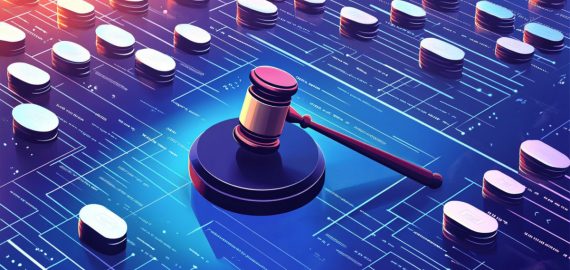Decentralized APIs and MEV Mitigation: API3’s Multifaceted Approach to Solving DeFi’s Oracle Dilemma


In Brief
API3 introduces new oracle solutions to enhance DeFi protocols’ sustainability and efficiency, addressing limitations of traditional Oracles with Airnode technology and decentralized APIs.

Recently, API3 released new oracle solutions designed to increase DeFi protocols’ sustainability and efficiency. This is a major step forward in resolving some of the ongoing issues that the DeFi ecosystem is facing.
Taking Care of the Traditional Oracles’ Limitations
In response to the shortcomings of conventional oracle systems, API3 was developed. Oracles are essential to the DeFi industry because they provide smart contracts access to actual data. However, problems like centralization, excessive expenditures, and doubts about the reliability of the data have dogged the solutions that are now in place. API3 uses novel techniques to try and solve these issues, especially with its Airnode technology and the idea of decentralized APIs (dAPIs).
The Oracle Stack, a complete solution that does more than just provide data to blockchain networks, is the centerpiece of API3’s product line. This stack includes elements intended to recover value lost in DeFi transactions, specifically concerning Miner Extractable Value (MEV). By resolving this problem, API3 hopes to improve the DeFi protocols’ general effectiveness and offer greater benefits to both consumers and developers.
Innovations Fueling the Success of API3
The Airnode solution is one of the major improvements that API3 provided. By enabling API suppliers to manage their own nodes, this solution essentially removes middlemen from the data provisioning process. API3 encourages more decentralization and improves the openness and dependability of the data sources by allowing data providers to participate directly. This methodology differs from conventional oracle networks, which frequently depend on outside node operators.
Airnode’s design is quite remarkable. Designed to operate off-chain on the Ethereum network, it gets data from Ethereum nodes and sends it to aggregator contracts. This design provides a simplified way to transfer data directly to the blockchain, while also streamlining operations for API providers. As a result, many of the drawbacks of the current oracle systems are addressed in a more decentralized and frictionless operating approach.
The token economy model implemented by API3 is essential for encouraging involvement and guaranteeing the network’s long-term viability. Within the network, the API3 token is used for staking, payments, governance, collateral, and other purposes. Through a DAO framework, token holders may stake their assets to get rewards and take part in on-chain governance. By allowing stakeholders to directly influence the network’s security and evolution, this governance model balances token holders’ interests with the ecosystem’s general well-being.
In API3, the staking mechanism has two functions. It generates a pool of collateral that may be utilized for on-chain insurance in addition to rewarding members. This feature gives the network an additional degree of protection and could lure risk-averse DeFi protocols to API3.
The introduction of API3 on many platforms, such as HotsCoin, has resulted in heightened awareness of the project. With more than 86 million API3 tokens in circulation and a 125 million token maximum supply, the project has already had a big impact on the market. Both customers and investors appear to be quite interested, based on the fully diluted value and current market capitalization.
Growing Effects of API3 on the DeFi Ecosystem
The growth trajectory of API3 has been remarkable. The initiative declared in May that it had secured more than $1 billion in Total Value, a tenfold increase in just one hundred days. This quick growth indicates how API3’s solutions are becoming more and more popular within the DeFi ecosystem. The platform’s oracle services now secure assets across 20 protocols, with PAC Finance accounting for a substantial portion of the total value.
API3 uses a diverse strategy to solve the Oracle challenge. The project intends to develop a more effective and transparent mechanism for off-chain data access by establishing the dAPI network. This network makes it possible to cut out pointless intermediaries, which might lower costs and speed up data transmission to DeFi protocols.
In the present DeFi context, the project’s emphasis on recovering value lost via MEV is especially pertinent. MEV has been a recurring problem that frequently raises transaction costs and decreases user efficiency. By solving this issue directly into its oracle stack, API3 is helping DeFi protocols and their users by alleviating an important pain point.
The project’s attempts to make it simple to switch from other Oracle services, such as Chainlink, show that it is taking a calculated strategy to expand its market share. API3 is decreasing the adoption hurdle for protocols that might be thinking about switching to a more efficient oracle solution by offering tools to make the transfer process easier.
Disclaimer
In line with the Trust Project guidelines, please note that the information provided on this page is not intended to be and should not be interpreted as legal, tax, investment, financial, or any other form of advice. It is important to only invest what you can afford to lose and to seek independent financial advice if you have any doubts. For further information, we suggest referring to the terms and conditions as well as the help and support pages provided by the issuer or advertiser. MetaversePost is committed to accurate, unbiased reporting, but market conditions are subject to change without notice.
About The Author
Victoria is a writer on a variety of technology topics including Web3.0, AI and cryptocurrencies. Her extensive experience allows her to write insightful articles for the wider audience.
More articles

Victoria is a writer on a variety of technology topics including Web3.0, AI and cryptocurrencies. Her extensive experience allows her to write insightful articles for the wider audience.

















































